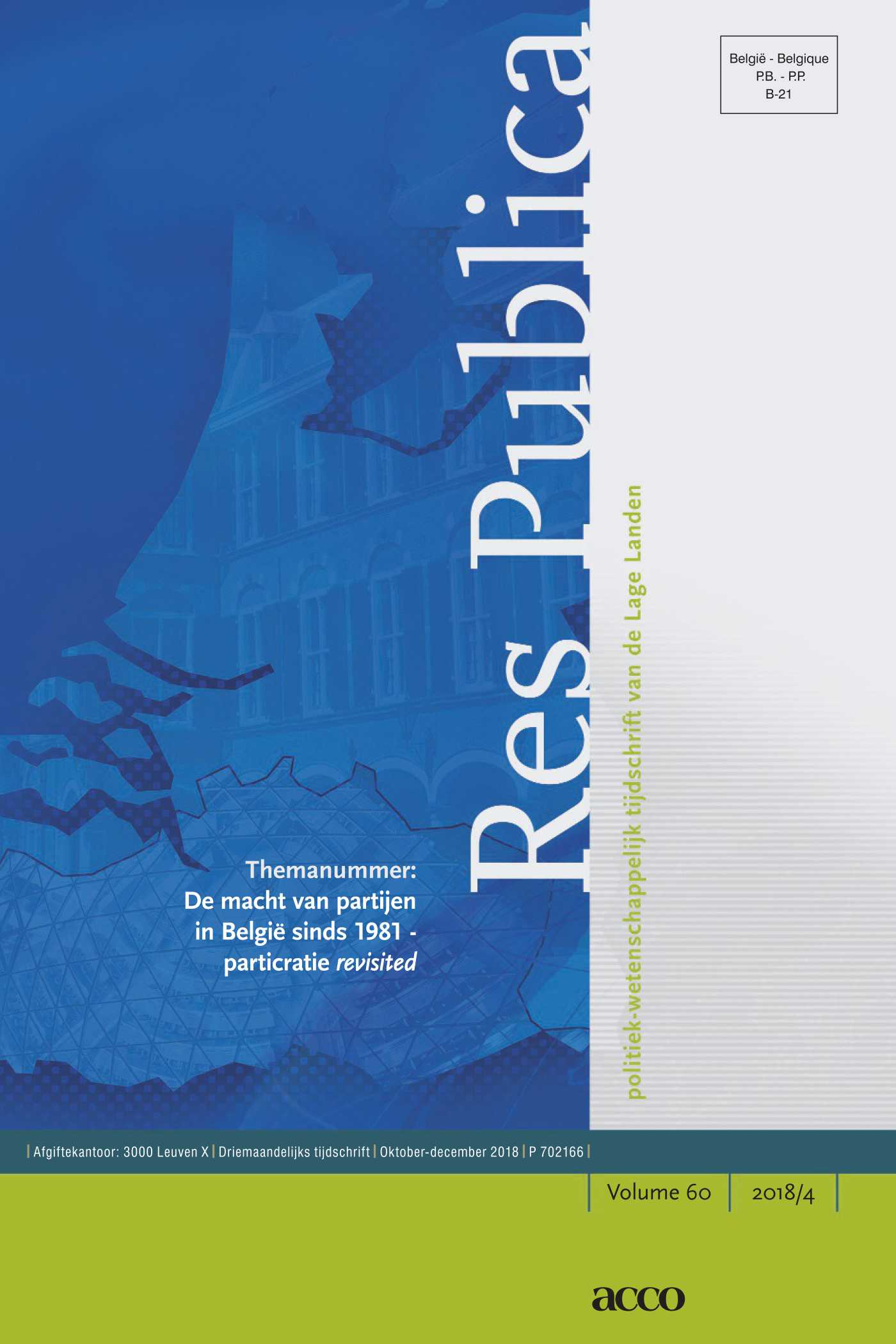|
Together with the city council elections, the citizens of Antwerp elected on 8 October 2000 nine district councils. This new decentralised political level is primarily initiated to restore the confidence of the citizens in the city (and district) government(s). By analysing the results of the city and the district elections we try to find indications whether citizens feel closer to their new district governments or not. Apparently district elections resulted neither in a higher voter turn-out, nor in less blank votes. Nevertheless, there is a significant correlation of voter turn-out and blank votes with population (density) of the districts. And although the differences between the electoral results of the city elections and the district elections are not huge, a different political landscape comes more or less into existence in the several districts. Quite surprisingly the number of list votes is higher on the district elections than on the city elections, while we would have expected a higher number of preferential votes. Correctingfor incumbents and famous candidates on the lists, our initial expectations hold much better. Generally spoken, we can conclude that the district elections do not give much proof of a closer connection between the citizens and the city government. Nevertheless we find some important differences between the districts. |


Res Publica
About this journalSubscribe to the email alerts for this journal here to receive notifications when a new issue is at your disposal.
| Article |
|
| Authors | Peter Thijssen and Danny Van Assche |
| Abstract |
| Article |
|
| Authors | Bart Maddens, Jan Tommissen, Dieter Vanhee e.a. |
| Abstract |
|
A survey amongst 602 Flemish secondary school pupils, aged 17-18, shows that a distinction can be made between two different, albeit closely related, dimensions of royalism: the emotional attachment to the king as a person and to the royal family on the one hand, and the political support for the monarchy on the other. Respondents are predominantly indifferent or negative about the monarchy, particularly on the emotional dimension. A multivariate analysis shows that male and non-churchgoing pupils are more negative on both dimensions. Pupils from migrant families are more positive on the emotional dimension. The scores on both dimensions are higher amongst pupils who identify with Belgium rather than with Flanders, who have strong patriotic feelings and who tend towards an authoritarian attitude. The scores are lower amongst pupils with apreference for a regionalist party. The hypothesis that intense royalist feelings coincide with a general attitude of trust in the political authorities was only confirmed with regard to the emotional dimension, while the political support for the monarchy appears to be detached from the trust in the political authorities. |
| Article |
|
| Authors | Peter Bursens |
| Abstract |
|
This article starts from the observation that the Belgian level of adaptation to the requirements posed by its membership of the European Union is surprisingly low. Following an institutionalist line of thinking, it is argued that the impact of the European Union is seriously constrained by the characteristics of the Belgian federal system. This results into defining both cultural (1) and structural (2) indicators for the degree of Europeanisation: (1) European opinions and awareness of political elites and the general public and (2) the Belgian domestic organisation of European co-ordination mechanisms. The article more concretely argues that the European opinions and European awareness of the political elites and the public opinion are coloured by an inwards-looking mentality that stems from the dominant focus on the ongoing federalisation process. In addition, it is also found that the limited Europeanised installation and outcomes ofthe European co-ordination mechanisms are at least partly shaped by hard and soft federal elements |
| Article |
|
| Authors | Maurice Adams |
| Abstract |
|
On the 16th of May 2002, the Belgian House of Representatives approved of a Bill on euthanasia. Belgium is now the second country in the world, next to the Netherlands, that has legislation which under certain conditions legitimizes euthanasia (i.e. intentionally terminating life by another person than the person concerned, at this persons request). In this article the Belgian legislative procedure on euthanasia is looked upon from a political point of view. To be able do so first of all the legal context on euthanasia before the new bill was approved of has to be discussed. Then the political history of the process of legal change with regard to euthanasia is analysed from 1980 onwards. And finally the Belgian process of legal change on this subject is compared with the process of legal change in the Netherlands. |
| Article |
|
| Authors | Christophe Pelgrims |
| Abstract |
|
Handbooks of political science aften refer to the minister and the civil service as actors in the policy process. In theory, this representation is correct. However, in Belgium and in Flanders ministers construct a ministerial cabinet around them. The cabinet takes over different tasks from policy preparation to evaluation. In this respect, it reduces the civil service to an office that is only responsible for the implementation of policy. Frequently political-historical reasons are used to explain the existence of the system of ministerial cabinets. Nevertheless, these are not the only reasons. Ministerial cabinets also exist because of organisational and cultural reasons. Understanding the ministerial cabinet, means understanding the way ministers want to work. This article highlights the way ministerial cabinets work, with a focus on Human Resources aspects. This gives information in which direction the civil service should move to fulfil the role of a good partner for the minister. |

 Issue 4
Issue 4